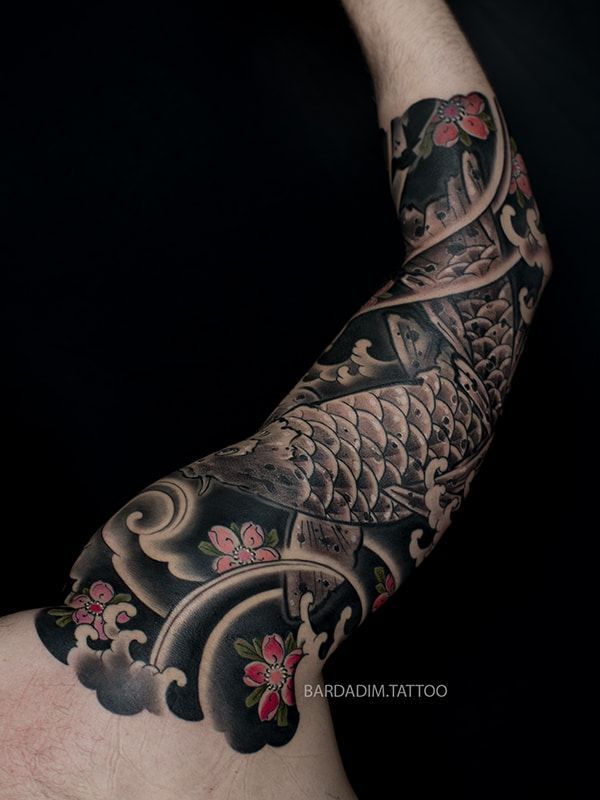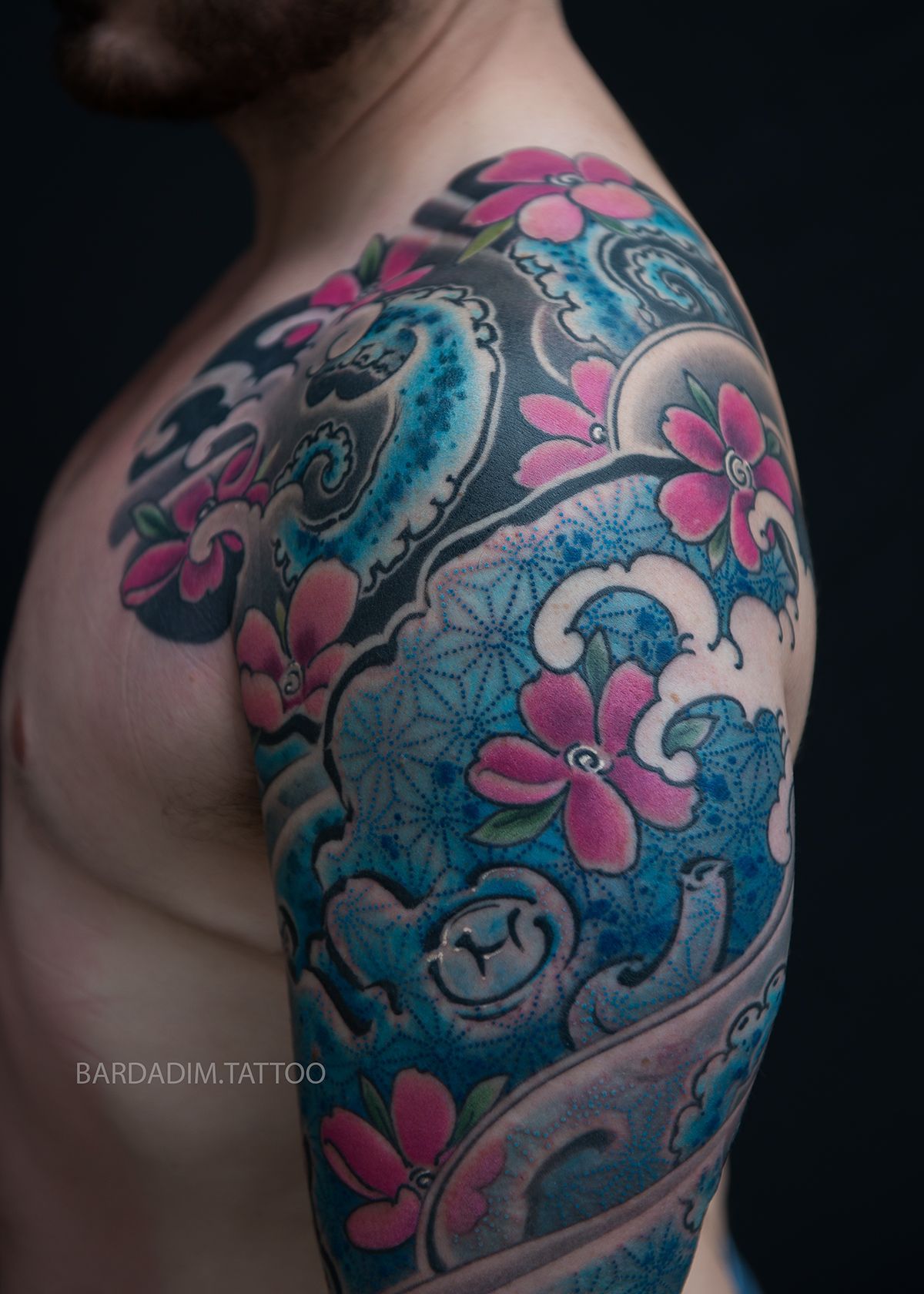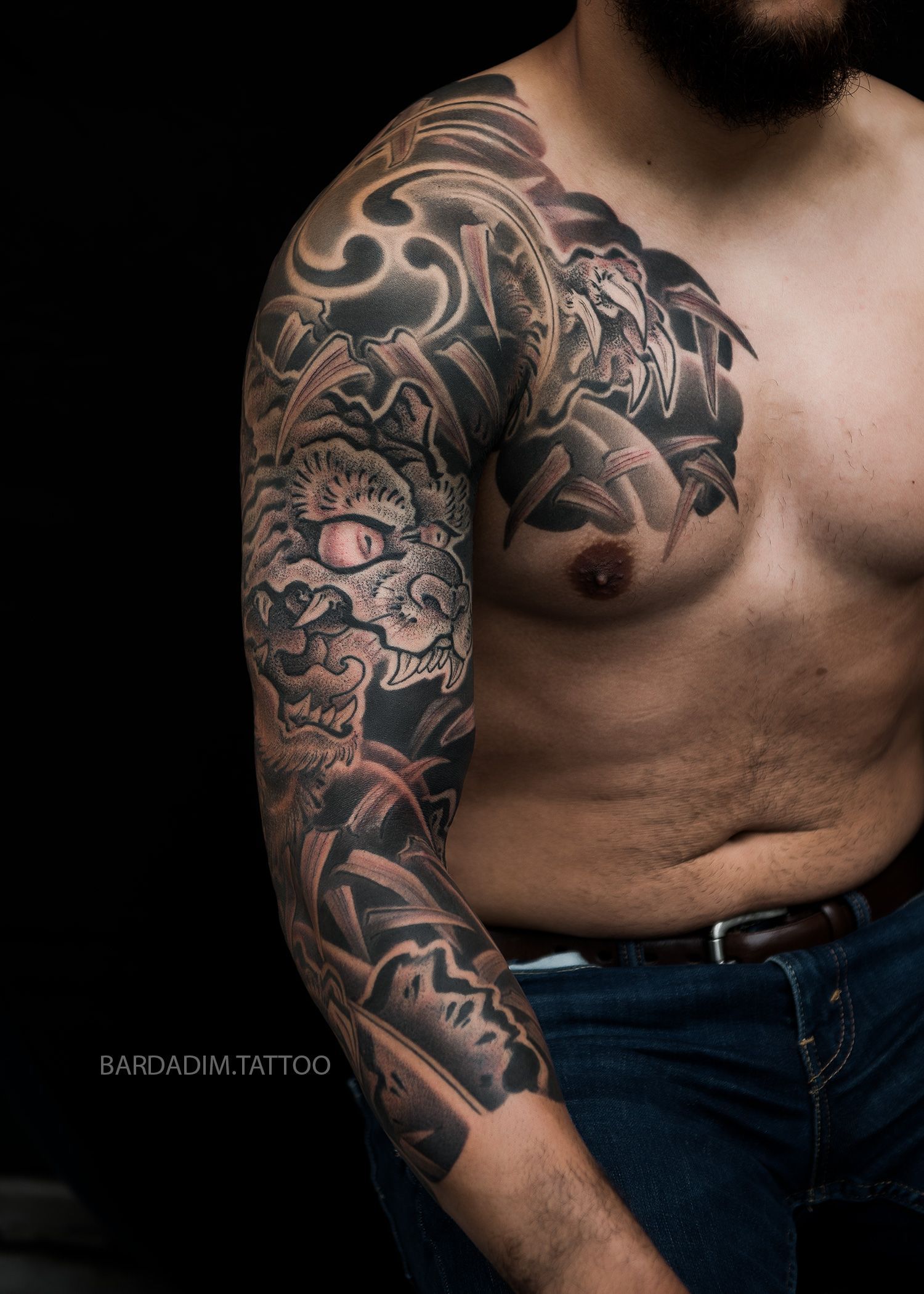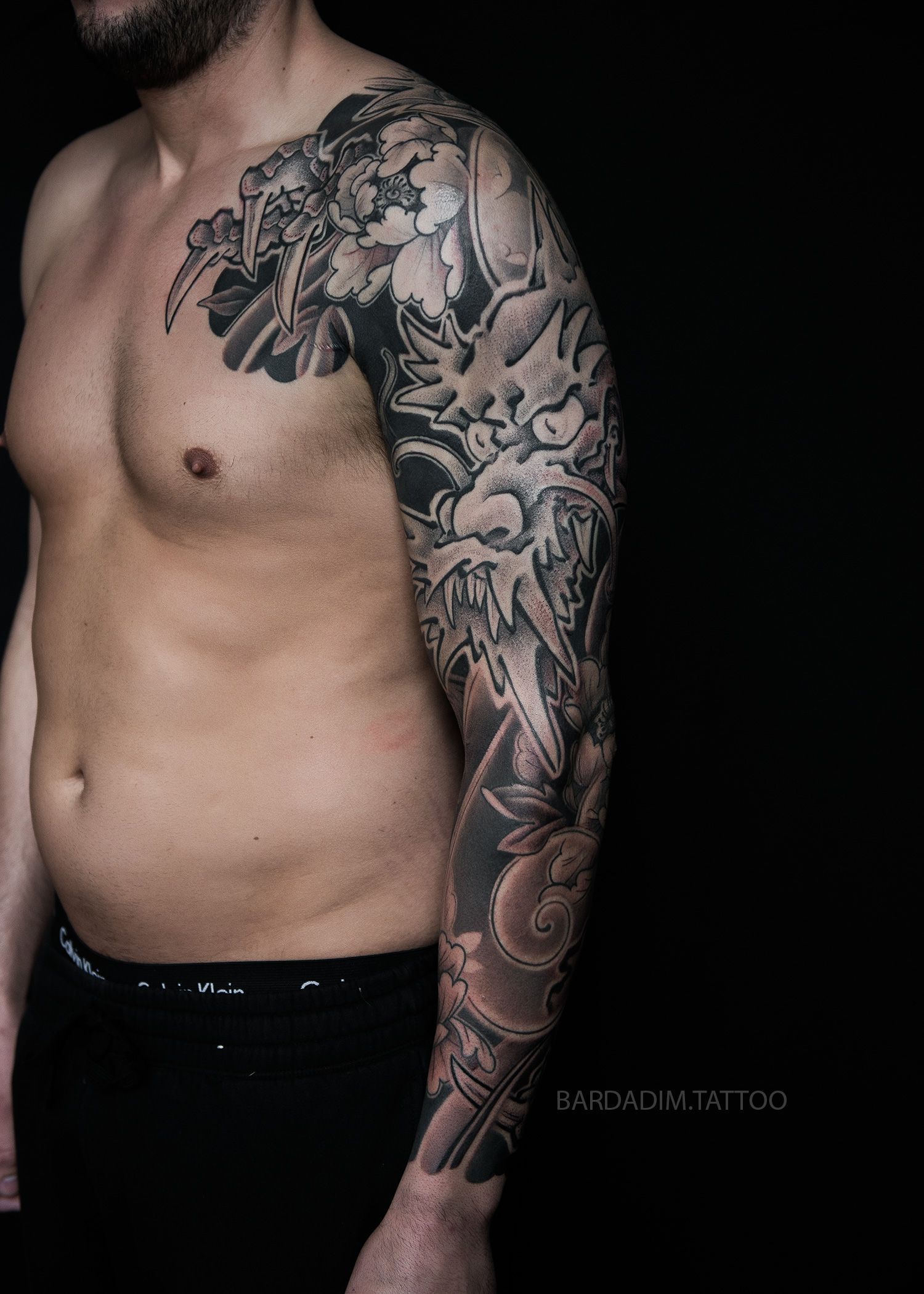Japanese Half Sleeve
This Japanese Half Sleeve done by George Bardadim, Tattoo Artist and owner of Bardadim Tattoo Studio, Brooklyn, NYC
Showcasing Orange or Yellow Koi fish- Carp, climbing up the water fall, surrounded by Momiji – Maple Leafs.
A little bit about Koi in Japanese art.
KOI (CARP)
Probably surprising to many westerners is the very large amount of ancient myths that surround these beautiful fish in the orient, and their elevated status there. The koi is more than just a colourful and collectible fish, it is also one of the most popular and beautiful story, myth, tale and tattoo themes, a beauty which belies its symbolic meaning. Although Chinese in origin, the koi is now widely celebrated in Japan, particularly for its masculine qualities. It is said to climb waterfalls bravely, and, if caught it will lie upon the cutting board awaiting the knife without a quiver, not unlike the warrior facing the sword.
Eventually, the stoic fish came to be associated with so many masculine and positive qualities that it was appropriated for the annual “Boys day festival” in Japan where even today colourful, streaming koi flags are traditionally displayed for each son in the family. In tattoo imagery, especially in combination with flowing water, it symbolizes much the same courage, control, and the ability to achieve goals with an understanding of life’s trials”.
Longmen Falls (Dragon’s Gate)
One theme that dates back to ancient China, where a legend tells of how any koi that succeeded in climbing the falls at a point called “Dragon Gate” on “Yellow River” would be transformed into a dragon. Based on that legend, it became a symbol of worldly aspiration and advancement.
Not all koi are headed for dragon gate, and not all koi are stoic, there are other stories. Another popular story is of a giant koi that is killing off the fishermen of a small village, only to be killed by a boy of the village making the boy a hero, often translated as “Golden Boy” is a folk hero from Japanese folklore know as “ Kintaro”.
MOMIJI (MAPLE LEAF)
One of the most popular backgrounds is the Japanese maple, a symbol of time passing, a symbol of the wind. the design often conveys the leaves as floating, carried on the wind or in the water. In Japan, it’s also the symbol of lovers. In some Japanese tattoo designs, canopies of maple leaves float over shoulders and drift over the torso.
A single leaf or a multitude of leaves are also potent symbols of regeneration and resurrection as they cycle through the seasons. Changing seasons are marked by the transformation of the leaves from trees. Spring, Summer, Fall and Winter are potent reminders of the circle of life, leaves are vivid reminders to us all of the life-and-death cycle of all living things. A tree losing the last of its leaves in the cold winds of autumn, to be stripped bare for the onset of winter has a poignancy that has long stirred the souls of poets, philosophers and men alike. The parallels of our own human lifetime are all too obvious. We could do worse than to meditate upon a rotting leaf on a damp forest path, often just a ghost of its former self. ‘This too will pass,” said the Buddha. ( Source )
More Japanese Half Sleeve Tattoo here.





